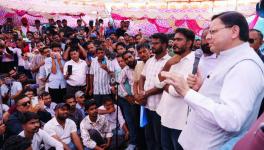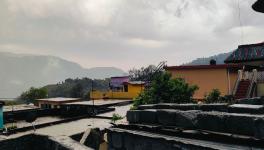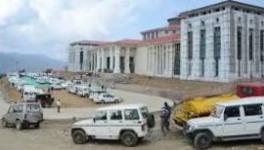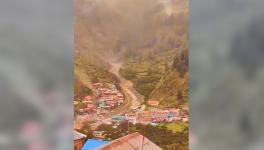Far from Home: 22 Years on, Migration a Perennial Problem for Uttarakhand
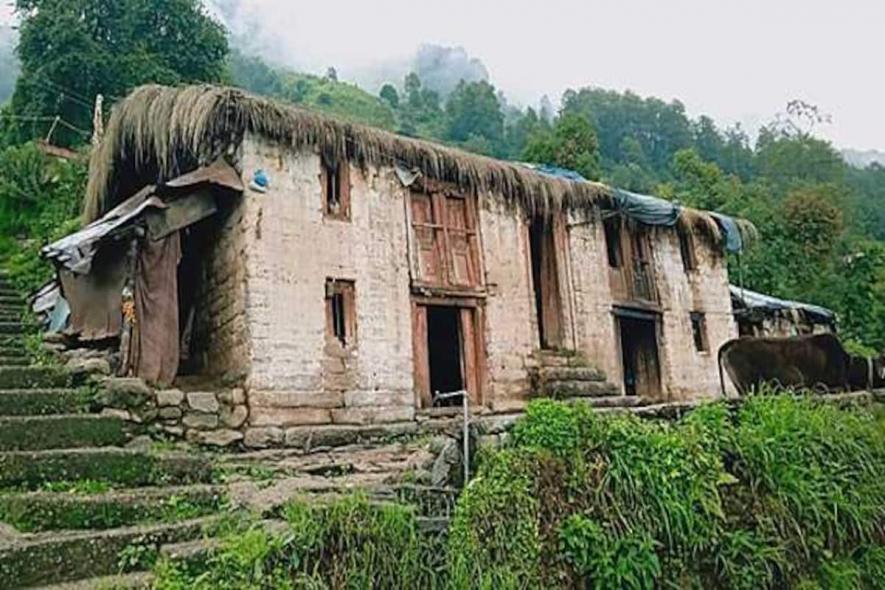
Image for representational purpose. Credit: Firstpost
Dehradun, Nov 13 (PTI) During the lockdowns, tens of thousands of people returned to their villages in Uttarakhand in droves from faraway lands, as the hope of a better life was dashed.
A majority of them had no other option but to leave home again to earn their livelihood due to the lack of employment opportunities in their native place.
Only 5-10% of those have stayed back, mostly those who did not have a dependable job in the cities to fall back on, said Rural Development and Migration Prevention Commission (RDMPC) vice chairperson S S Negi.
The state, which celebrated the 22nd anniversary of its foundation on November 9, continues to grapple with the complex problem of migration from its villages, especially those in the hills due to a bleak livelihood scenario, and poor education and health infrastructure.
As many as 1,702 villages in the border state have become uninhabited as residents migrated to urban areas in search of jobs and better education and health facilities, Negi told PTI in an interview.
Pauri and Almora districts have been the worst hit by migration, he said, adding that a total of 1.18 lakh people have migrated from Uttarakhand's villages.
"Most of the migrations have been caused by aspirations to lead a better life," Negi said.
A majority of the migrations had been caused by a search for better job opportunities.
People have also migrated due to poor education facilities, bad health infrastructure, low agricultural produce or due to wild animals destroying standing crops.
Earlier, people used to migrate out of the state to big cities like Mumbai and Delhi. In recent years, migrations have been local in nature as people are moving from villages to adjoining towns, sometimes even in the same district within the state, according to Negi.
"We're currently touring the villages in Haridwar district and have found that people are not migrating out of the state, but to different towns within the district," he said.
He said people from the villages of Haridwar are migrating to Roorkee or Bhagwanpur in the district or villagers from Pauri are migrating to Kotdwar, Srinagar or Satpuli towns in the district.
It helps them to make a living in the towns and, at the same time, stay in touch with their roots. They can visit their villages on weekends as they are not very far. "Migration continues, but the situation is not as bleak as it used to be a few years ago. We do not have hard data as of now to prove it, but things are changing fast," he said.
Negi underscored that giving work and a life of dignity to the people, who stayed back in their villages after the lockdown, was the state government's biggest challenge.
He felt that giving a boost to the service sector like tourism seems to be the only way to put brakes on migration because large-scale industrialisation in the hills is not possible.
Negi hoped that the Union government's all-weather road project, which is nearing completion, can be expected to give a major boost to tourism in coming years.
It can generate many employment opportunities for the local population and control migration, he said. He pointed to the record footfall at the Char Dham Yatra this year, saying that improved facilities can lead to more tourists.
"Something similar will happen to the rest of Uttarakhand when the all-weather roads become operational," Negi said.
The RDMPC vice chairperson said another thing that could help rein in migration is Mukhyamantri Swarojgar Yojna, which provides easy loans to people to start a business of their own in poultry, dairy, hospitality and horticulture sectors.
If each family in the hill villages begins to earn Rs 10,000 per month, their migration may come to a halt, Negi said.
"If the focus shifts to the villages, and better education and health facilities are created there, why would anyone leave one's roots?"
Get the latest reports & analysis with people's perspective on Protests, movements & deep analytical videos, discussions of the current affairs in your Telegram app. Subscribe to NewsClick's Telegram channel & get Real-Time updates on stories, as they get published on our website.











